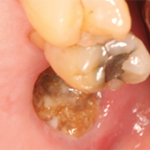Data-Intensive Methodology
The evidence review was conducted using the GRADE methodology, which is designed to be transparent and data driven, and is used worldwide for conducting consensus development, said Timothy E. McAlindon, MD, MPH, the literature review team leader and chief of rheumatology at Tufts Medical Center in Boston.
Panelists generated 203 final PICO (Population Intervention Comparator Outcomes) questions and referenced 85 publications by the end of a thorough review process, he said. Different patient populations’ fracture risks were considered, including adults older or younger than 40, women of childbearing potential for whom some osteoporosis treatments might have maternal or fetal risks, adults on very high-dose glucocorticoids, adults who have received organ transplants and children ages 4–17.
According to Dr. McAlindon, intervention comparators included:
- Calcium and vitamin D supplementation;
- Lifestyle modifications, such as smoking cessation or exercise;
- Oral and IV bisphosphonates;
- Raloxifene in postmenopausal women; and
- Teriparatide and denosumab.
Fractures were the only critically important outcomes included in rating the evidence, but other adverse events, such as upper gastrointestinal toxicity from oral bisphosphonates, were also important considerations, he said.
Use a fracture risk assessment tool such as FRAX to estimate fracture risk in patients who are 40 or older, the panel recommended. FRAX is an online-based tool that estimates risk on the basis of age, sex, weight, height, glucocorticoid use, previous fractures, BMD, smoking status and other factors. One drawback of FRAX is that it does not take glucocorticoid dose into account, said Dr. Buckley. Adjust hip fracture risk by 20% and major osteoporotic fracture risk by 15% in patients who take 7.5 mg/day or higher doses, she said.4
Fracture risk assessment for patients in all age groups should include details of glucocorticoid use; evaluation of falls, fractures and frailty; and a thorough physical exam, the panel recommended.
For adults 40 and older, add a baseline FRAX with bone mineral density (BMD) and glucocorticoid dose adjustment. Repeat BMD testing every one to three years for patients not currently on glucocorticoids, every two to three years during treatment for patients on very high doses or if there is a concern about poor adherence or absorption of osteoporosis treatments and every two to three years after completion of glucocorticoids, Dr. Buckley said.
Draft Recommendations
For all age groups, the panel’s strong recommendations are:
- Optimize calcium and vitamin D intake, and implement lifestyle modifications, such as weight-bearing and strength-building exercise, smoking cessation and limiting alcohol intake; and
- Treat men and women not of childbearing potential and who are younger than 40 years old and those 40 or older at moderate to high fracture risk with, in order of preference, oral bisphosphonates, IV bisphosphonates, teriparatide, denosumab and raloxifene, which may be used for postmenopausal women for whom none of the other medications are appropriate.
For special populations, conditional recommendations are:
- For adult women of childbearing potential at moderate to high risk who are not planning a pregnancy during osteoporosis treatment, treat with oral bisphosphonates; if an alternate option is needed due to lack of success with oral bisphosphonates, choose teriparatide, because of its short duration of action;
- For solid organ transplant patients who are continuing glucocorticoid treatment and have a GFR (glomerular filtration rate) >30, treat according to the recommendations for their age group. Evaluate renal transplant patients for metabolic bone disease, and avoid denosumab due to the lack of data about infection risk in people on multiple immunosuppressive agents;
- For children 4–17 years old, optimize calcium and vitamin D intake, and add oral bisphosphonates if the child has sustained an osteoporotic fracture and is continuing glucocorticoids at ≥0.1 mg/kg for ≥3 months. Use IV bisphosphonates if oral treatments are not appropriate for these patients; and
- For patients who are on very high-dose glucocorticoids, or ≥30 mg of prednisone and a cumulative dose of >5 g in a year, and are 30 or older, treat with oral bisphosphonates.
Special considerations during osteoporosis treatment are:
- For those who fail treatment or have a fracture after 18 months of oral bisphosphonate or have a significant BMD loss of more than 10% a year, treat with another class of medications, such as teriparatide or denosumab, or use IV bisphosphonates if failure is due to poor adherence or absorption;
- For patients who have completed oral bisphosphonate treatment but remain at high fracture risk, continue on active treatment if they remain at high risk; and
- For patients who have discontinued glucocorticoid treatment, stop osteoporosis treatment if reassessment shows they are now at low risk, or complete the treatment if they are at moderate to high risk for fracture.
Most of the recommendations were conditional, rather than strong, due to a shortage of direct evidence of fracture risk in populations treated with glucocorticoids, said Dr. Buckley. These new recommendations emphasize clinical decision making over time and attention to the considerations of special patient populations. “We thought their clinical risk was significant,” she said.

